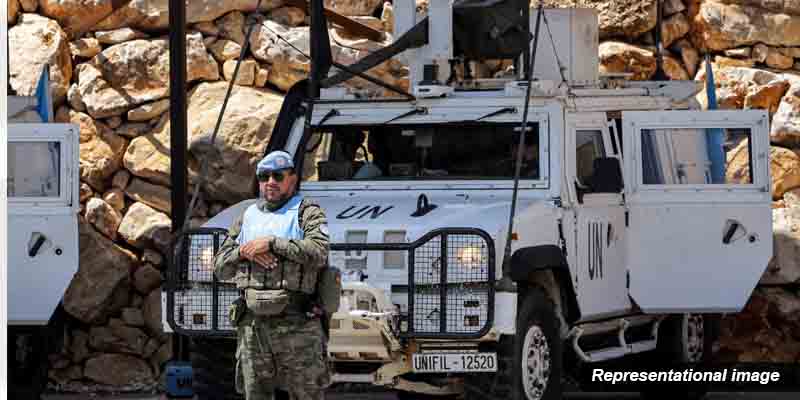- World
- Nov 17
UN slams Israel after attack on peacekeepers in Lebanon
• A foot patrol of the United Nations Interim Force in Lebanon (UNIFIL) was targeted by an Israeli army Merkava tank from an Israeli position in Lebanese territory on November 16.
• The UN Interim Force in Lebanon (UNIFIL), established in 1978, patrols Lebanon’s southern border with Israel.
• According to the UN peacekeeping mission, bursts of heavy artillery hit an area just five meters away from the UNIFIL blue helmets, who had to quickly retreat and take shelter in the terrain.
• In response to queries, IDF representatives reportedly claimed that the attack was the result of UNIFIL troops being “misidentified” due to the weather conditions, and that it had no intention of firing on the peacekeepers.
• This is the third incident of its kind in the last three months.
• On September 2, IDF drones dropped four grenades close to UNIFIL peacekeepers working to clear roadblocks hindering access to a UN position near the ‘Blue Line’, the buffer zone between Israel and Lebanon patrolled by UNIFIL.
• On October 26, UNIFIL reported that an Israeli drone dropped a grenade near a UN patrol, followed by tank fire directed at peacekeepers.
• The incident comes at a delicate time for UNIFIL, which is set to leave Lebanon at the end of 2026, after nearly half a century of presence along the Blue Line.
What is the history of Blue Line?
• Following an invasion by Israeli forces into Lebanon, the UN Security Council, in March 1978, established the United Nations Interim Force in Lebanon (UNIFIL) mandating it to confirm the withdrawal of Israeli forces from Lebanon, restore international peace and security, and assist the Lebanese government to restore its effective authority in the area.
• In June 1982, Israel invaded Lebanon for the second time and subsequently established a security zone inside the country, which remained until its withdrawal in 2000.
• In 1985, Israel partially withdrew its forces from Lebanon, but retained control of an area in southern Lebanon controlled by Israel Defence Forces (IDF) and Lebanese De Facto Forces (DFF).
• On April 17, 2000, the government of Israel notified the UN Secretary-General that it would withdraw its forces from Lebanon by July 2000.
• In preparation of the withdrawal of the Israel Defence Forces (IDF) from Lebanon, the UN identified the ‘Line of Withdrawal’, or so-called ‘Blue Line’, largely conforming to the internationally recognised boundaries of Lebanon.
• The United Nations established this Line in June 2000 for the sole purpose of confirming the full withdrawal of the IDF from Lebanese territory.
• The Line is described as the best approximation of the 1923 Boundary Line and the 1949 Armistice Demarcation Line. It does not in any way represent an international border and is without prejudice to any future border arrangements between Lebanon and Israel. The Line is 120 km long.
• Until July 2006, despite numerous violations of the Line of Withdrawal, as well as sea and air violations, and occasional breaches of the ceasefire, the situation in the area remained relatively calm.
• On July 12, 2006, war broke out between Israel and Lebanon after Hezbollah had carried out an attack on an IDF patrol, kidnapping two IDF soldiers and killing three others.
• On August 11, 2006, the Security Council adopted resolution 1701 (2006), which ended the war and in which the Council decided to enlarge UNIFIL (to a maximum of 15,000 troops) and enhance its mandate.
• UNIFIL headquarters is located in Naqoura. The area of operations extends from the Blue Line in the south to the Litani River in the north and is divided into two sectors, East and West.
• The mission has more than 10,000 troops from 50 countries and about 800 civilian staff.
• The mandate for the operation is renewed annually by the 15-member UN Security Council.
• In August 2025, the UNSC extended the UN peacekeeping mission which patrols the so-called Blue Line of separation between Israel and Lebanon “for a final time” till December 31, 2026.

